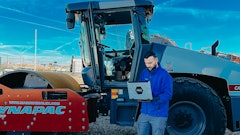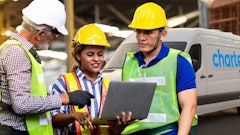
Increasingly, companies are mandating their employees return to the office, leading to a messy stalemate between managers and workers. That said, executives have admitted those mandates haven’t moved the needle on superhuman productivity as they would have hoped, despite some 90% of employers enforcing a return-to-office (RTO) policy in 2024 to middling success.
In reality, the traditional 9-5 causes numerous negative impacts, not the least of which is air pollution on the morning commute that affects both commuting workers’ cardiovascular health and overwhelmingly contributes to the US greenhouse gas emissions and climate change.
The Harvard Business Review reports that 83% of workplaces found a shift to remote work to be successful for their companies, and 54% of workers expressed they’d prefer to remain remote. That said, Axios reports that, on the other side of the pandemic, hybrid work seems to have become the norm, with 65% of CFOs signaling that hybrid work arrangements would be offered this year.
As the American workplace adapts, the traditional 9-5 will likely continue to become less common. What does that mean for landlocked employers staring down half-empty offices? Or for builders likely to lose out on contracts to construct corporate headquarters, the drab and monotone monuments to the offices of a bygone era?
In this article, I discuss how corporations, particularly the managers and employees at odds regarding work arrangements within them, may make important compromises not only for themselves, but also for the good of the planet. Particularly, I discuss how an architectural concept, “adaptive reuse,” may enter the lexicon of companies looking to repurpose spaces for the greater good.
What Is Adaptive Reuse? Concept and Examples
The concept adaptive reuse is the practice of repurposing abandoned, older structures for a different purpose than what they were originally intended for with the express purpose of extending the building’s life.
Benefits include:
- Promotes sustainability–numerous studies (ref. 1, 2, 3, 4) signal the merit of using adaptive reuse as an approach to sustainability. For one, adaptive reuse projects have the potential of reducing embodied carbon, the carbon footprint of a building–one JLL property was able to achieve 38% embodied carbon savings compared a standard office.
- Preserves the historical heritage of iconic buildings.
A common example of adaptive reuse projects seen are the abandoned shopping malls, many of which are repurposed such as being turned into a fulfillment center for the same ecommerce giant that likely led to their demise. Other examples include former churches being converted to art exhibits, gas stations being converted into restaurants and shops, etc.
Adaptive Use and the Workplace: Eco-Friendly, Worker-Friendly, Employer-Friendly
The traditional workspace is in need of a rewrite. Consider, for example, that 20% of office space real estate sits vacant (JLL via Cornell School of Business). With workers and managers pitted against each other in a fight for what the modern office space may look like, here are some examples of how companies may use adaptive reuse to improve outcomes for employees, customers, partners, as well as the surrounding community and economy:
- Housing: Consider the quickly rising cost of living in cities like San Francisco, New York, and Los Angeles, three cities that make the global list of most expensive cities in the world. Companies looking to repurpose some of their empty office buildings may look to the housing market. After all, for companies in the wealthiest cities mandating RTO policies, contributing to the housing market may be one way to get some good will back with employees.
- Community Gardens, Parks, and Public Spaces: Consider Harley-Davidson, the iconic motorcycle manufacturer, and their recent plans to reinvigorate their surrounding headquarters with a $250,000 investment for a public park and a multi-use event space intended for the community. The motor company, who has embraced remote work, provides an example of how a traditional headquarters can be reimagined for public good while also paying tribute to their historic brand.
- Coworking Spaces: Another example of how companies can repurpose their headquarters, or at least part of it, would be subleases to smaller companies or coworking spaces. Consider the We-Work model. Even in a fully remote working office, parents with noisy children may prefer going to a dedicated office, a library, a coffee shop, to change their scenery. Reframing how we look at a traditional office space invites many exciting possibilities of what an otherwise empty floor could be–imagine sprawling greenspace that invites visitors and fellow industrious workers inside, perhaps a player piano providing songful peace of mind, a coffee shop where out-of-town coworkers meet and discuss an upcoming project or where clients and third-party vendors can interact vivaciously. At the very least, the coworking space provides the owner/operator some pretty grand, if free, advertising for participatory passersby.
Bottom Line
The verdict is out on what a modern workplace may look like in a year, five years, 10 years down the road. In the immediate future, it’s likely the adversarial nature between employers and employees about work arrangements will continue, some companies even tying performance to physical location. That said, it’s likely the pre-pandemic notions of what the workplace looks like is gone, the modern workplace being much different, and its very definition evolving. LinkedIn and their modern, hybrid office perhaps sheds the most light and provides an example of how a company confronted with a changing workforce’s needs reacts in a positive, constructive way.
With the shifting landscape of the modern workplace in our sights, it’s warranted to encourage companies to think responsibly about how they may approach their offices. That way, through adaptive reuse, they can leave their mark on their headquarters redevelopment while also creating a space that can have a positive impact on the community and the environment.


























